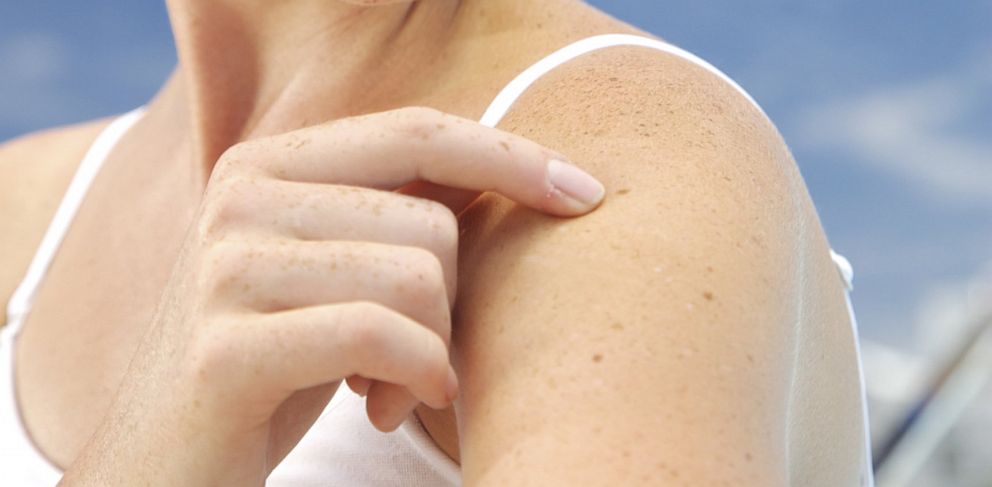There are different types of skin cancers; the most often diagnosed are melanoma, basal cell carcinoma, squamous cell carcinoma and Merkel cell carcinoma.
If you or a loved one has recently been diagnosed with any of these skin cancers, we know you have questions. Let’s dive in together to help you understand your treatment options.
Basal cell carcinoma mainly appears on the face, neck, arms and legs. This type of skin cancer rarely spreads to other parts of the body that are not exposed to the sun.
Treatment options include immune-modulating therapy (medication), photodynamic therapy (a combination of light and chemicals), surgery and radiation therapy. Your options may depend on your health, the size of the growth or tumor and its location.
Squamous cell carcinoma is caused by extreme, frequent exposure to the sun. It’s most often found on the face, neck, arms, legs and the back of the hands, but can also affect the rim of the lips and ears. People over the age of 40 who have had intense sun exposure most of their lives and patients who are immune-compromised due to organ transplants are at a higher risk.
Treatment options range from noninvasive radiation therapy to minimally invasive Mohs micrographic surgery or more invasive surgical excision.
Melanoma is considered the deadliest skin cancer and is sometimes caused by a history of sunburns and excessive exposure to the sun. It may appear on the arms, face and scalp as well as on the soles of the feet, palms and toenails for people with darker skin. This type of cancer looks like a freckle or a mole; it’s usually dark brown or black but can also look reddish, bluish or greyish. People with fair, sensitive skin that are more prone to burning than tanning, a family history of this skin cancer or more than 50 moles are at a higher risk.
Treatment options include excision or surgery once the cancer has been confirmed through a biopsy.
Merkel cell carcinoma is a rare and aggressive form of skin cancer that has a high risk of spreading and recurring. The painless nodules may appear reddish, bluish or purplish and grow quickly.
Treatment options include Mohs micrographic surgery, radiation therapy and traditional chemotherapy.
Actinic keratosis is also known as Solar Keratosis or age spots and appears on sun-exposed body parts such as the face, lips, hands and scalp. These precancerous growths appear scaly or crusty and may itch or sting. Actinic keratosis is caused by a history of severe sunburns and is more common in fair-skinned people with lifetime exposure to the sun, such as outdoor workers.
Treatment options include surgical removal or curettage, which scrapes away the damaged skin. Electrosurgery uses alternating electrical current to destroy the affected tissue. Cryosurgery involves peeling off the affected skin and then freezing the lesion with liquid nitrogen.
More than a thousand men and women diagnosed with cancer each year turn to our trusted team of cancer specialists. We encourage you to call us, ask us a question or consult with us to get a second opinion so you, tooo, can experience the difference.
The Editorial Team at Lake Oconee Health is made up of skilled health and wellness writers and experts, led by Daniel Casciato who has over 25 years of experience in healthcare writing. Since 1998, we have produced compelling and informative content for numerous publications, establishing ourselves as a trusted resource for health and wellness information. We aim to provide our readers with valuable insights and guidance to help them lead healthier and happier lives.
































